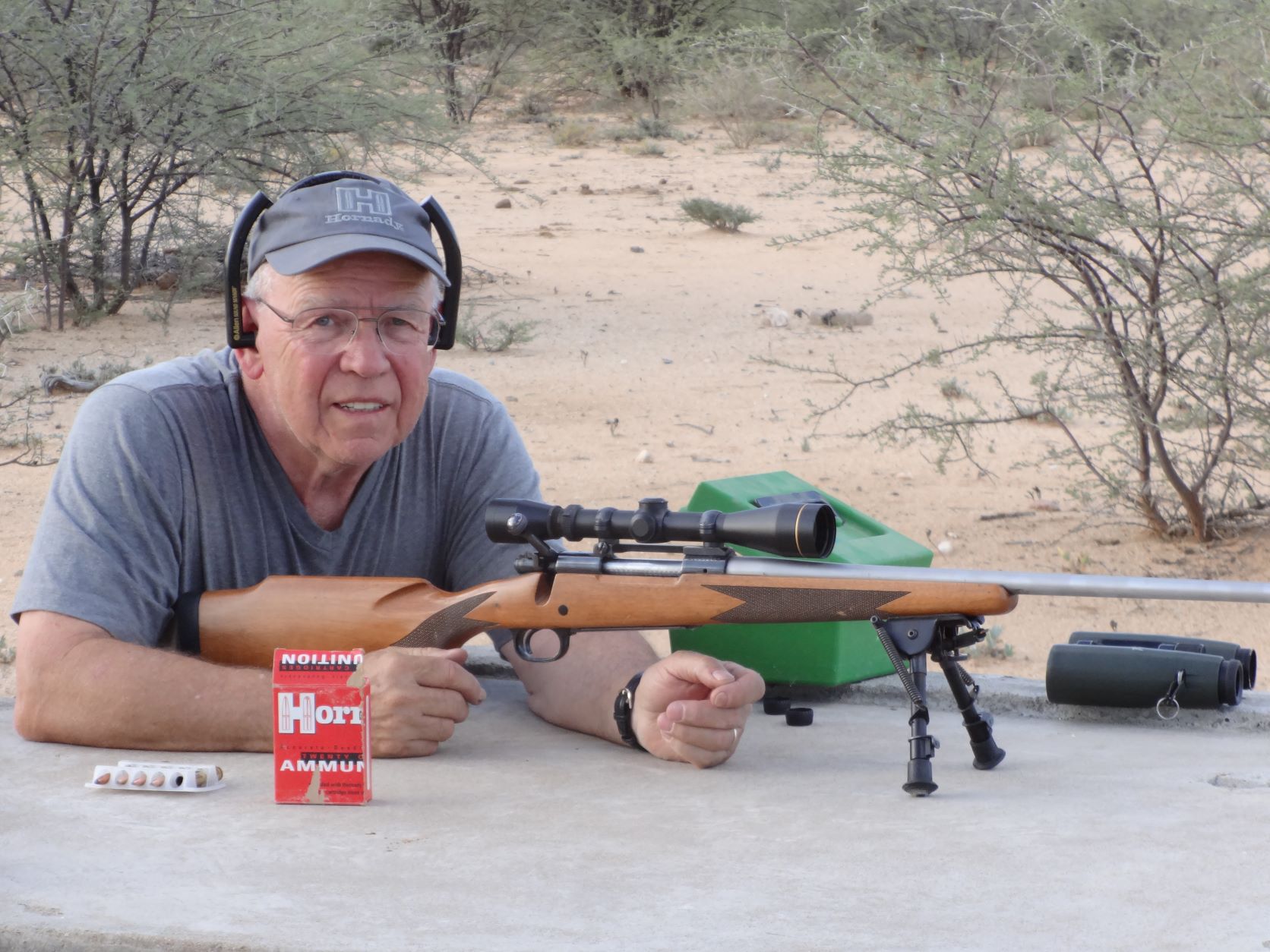[author] [author_image timthumb=’on’]https://www.biggame.org/wp-content/uploads/2021/03/P1010082_077.jpg[/author_image] [author_info]Terry Blauwkamp is a seasoned hunter, gun-expert and reloader. He has been to Africa more than 20 times. Terry has been a consistent part of DSC Publications through his reloading column.[/author_info] [/author]
Stabilization is a big word for a sometimes-confusing subject that very few people get involved in at all. What it means in shooting is for the bullet to spin fast enough to spiral like a football and keep the point in front, and not wobble in mid-flight.
All rifle barrels have a certain “twist,” as they call it, and it varies from caliber to caliber. An example is the old .243 Winchester vs .244 Remington saga, as Remington introduced it with a 1-12 (which means 1 complete bullet rotation for each 12” of travel). This seems to work well with bullets up to 100 grains, but when 117-gr or 120-gr bullets were used, they were too long and too heavy to be pushed fast enough to stabilize.
So Winchester jumped on the band wagon and introduced the .243 Winchester with a 1-10 twist, and things worked a lot better. That brought a quick demise of the .244 Remington caliber. So Remington reintroduced it as a new caliber called 6mm Remington, but with a 1-9 twist. But the .243 Winchester had a grip on the market by then, and the new 6mm Remington never caught up with it.
The 7mm caliber has had its share of bumps in the road too, but now it seems that anything from 1-8½ to 1-10 twist works well enough. Until I tried some of the new Barnes 168-grain LRX BT bullets. It says right on the box “1-8 twist or faster,” but I only had two 7mm Remington rifles, a 7mm-08 and a 7mm Remington Magnum, both with a 1-9 twist.
What I found is that the 7-08 apparently does not push that long MRX bullet fast enough to stabilize it, but the 7mm Magnum does. All but one of the bullets from the 7-08 keyholed at 50 yards, but all the shots from the 7 Mag appeared to go through just fine.
I also tried some 168-gr Berger VLD bullets, and they worked fine in both guns, and as noted on the box (use 1-10 twist or faster), so the factory Remington barrels were just fine.
This brings to mind an experience with a Douglas 1-12 twist .308 Winchester barrel I once had that just would not settle down and shoot anything heavier than 168-gr bullets worth a hoot. Now 1-12 is not wrong for the .308 Winchester, as lots of factory rifles come that way, even though the .30-06 Springfield is commonly built with a 1-10 twist, even though it is of higher velocity.
I then took the 1-12-twist barrel and rechambered it to a .300 H&H Magnum, which is even faster than the .30-06, just to see what would happen. Whoa, did it ever happen—it became one of the best barrels I’ve ever owned. I took it to Africa several times and used everything from 150-gr soft points to 180-gr Barnes TSX, and all worked like a charm; but it really loved the conventional 180-gr Hornady pointed Interlock soft points; or the Barnes 168-gr TTSX the best.
Maybe it was the fact that by pushing those bullets faster, they rotated fast enough to stabilize better.
If you want to start a controversy around the fire some night, get into a discussion of why for years and years, when .30-caliber barrels were shot out, the owners would have them re-bored to a .35 Whelen, and it was standard to have them made with a 1-16 twist.
I guess it was just fine for the 250-gr round-nose bullets that were about all that were available back in those days.
When Remington brought out the .35 Whelen as their “Gun of the Year,” it too came out with a 1-16 twist. Then they brought out the .350 Remington Magnum also with 1-16 twist.
It was rumored that when Sierra bullets got word of these calibers going commercial instead being wildcats, they set out to make a 250-gr BT bullet for it. But when they found out it was going to be in the 1-16 twist, they scrapped the idea and came out with a 225-gr BT instead, claiming that the 1-16 would not stabilize the 250 BT; and they were very likely correct.
I’ve never had a 1-16 twist, as I’ve had both the .35 Whelen and .350 Magnum barrels made with a 1-12 twist, and they worked just great, even with Hornady’s 250-gr Spire Point bullet.
Most of the custom barrel makers will give you a wide choice of twists to choose from, as depending on what bullet you want to shoot, the twist can be very important.
Feel free to write Terry anytime with shooting or reloading questions or points of interest at TBlauwkamp@Superior-sales.com
